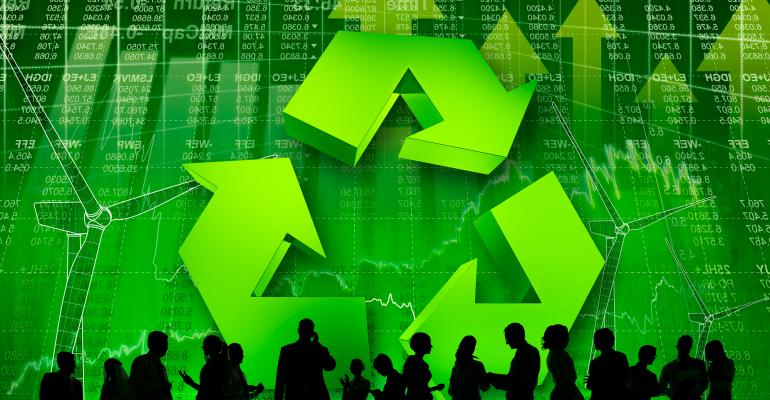It has become increasingly apparent over the last decade that real estate investors and the businesses that purchase or lease real estate properties from them, have come to recognize that growth and profitability can exist in tandem with wise environmental stewardship and sustainability. They could, that is, before the onset of the COVID-19 global health crisis. Today, as the economic ramifications of the pandemic are becoming uncomfortably clear, investors are asking themselves if they are able to continue to pursue with the same degree of emphasis on climate resilience and other green initiatives in the era of coronavirus. Although the short answer is that investors are likely to continue pursuing sustainability initiatives, it is difficult to make bold predictions at this time as there are still many unanswered questions. The industry is starting to see trends and projects undergo the impacts of COVID-19, including not only how investments and transactions might be structured, negotiated, and closed, but also the fundamental layout and design of developments.
In recent years, a number of major real estate firmsassisted by forward-thinking consulting groups and in cooperation with urban and community planners and policymakers—focused significant resources on calculating climate change-related property risks, such as rising sea levels, heat stress, wildfires, and other extreme weather events. Using sophisticated modeling tools to help measure the potential effects of such events on business disruptions, operating and capital costs, and other impacts on property values, investors were better informed as to the merits of their investment decisions.
Of course, risk identification was merely the first step. The next order of business was to develop and implement strategies that addressed climate-related risks head on. Such strategies included risk-mapping for existing and future portfolios; implementing adaption and mitigation strategies for current assets and for buildings being developed or under construction; diversifying portfolios; and investing in the very mitigation technologies from which their properties stand to benefit. Climate factors were more routinely incorporated into due diligence and decision-making processes.
Outdated land use regulations that failed to recognize climate vulnerability and resilience, or included overly burdensome restrictions, were also identified and addressed. For instance, by acknowledging flooding risks associated with impervious surfaces (roads, parking lots, driveways, etc.) and changing rules and practices around such infrastructure “improvements,” potential hazards could be reduced in fast-developing areas. Likewise, zoning and land-use regulations that allowed high-density developments in areas with increased exposure to wildfires were revised, to reduce risk to human lives.
Investors also worked with urban and community planners and other government policymakers to develop resilience strategies that addressed emerging challenges and incentivize the implementation of best practices and technologies. For example, Miami-Dade County initiated a nearly $200 million project to install pump stations, raise streets and sidewalks, and make other infrastructure changes to minimize the impact of storms and the rising sea, followed shortly thereafter by the 2013 launch of a 10-year, $600 million stormwater management program in Miami Beach.
Miami-Dade County is an example of many resiliency projects across the country aimed to protect against climate change that have seen their funding cut with the onset of COVID-19. The focus has now been shifted away from the urban planning principles, design best practices for mixed-use, office, retail, and residential properties and urban density concerns to how to move from commercial office space to work-from-home and how to ensure office and commercial spaces promote social distancing and a healthy environment. Because of this, many projects have been canceled, put on hold, or otherwise re-thought. In April 2020, the Architectural Billings Index, developed 25 years ago by the American Institute of Architects and the economic indicator for non-residential construction activity, reported its largest-ever single-month decline.
It is growing increasingly likely that COVID-19 will be with us for the foreseeable future, and as a result, everything in real estate is being re-envisioned, from doorknobs and light switches to the repurposing of food courts, indoor green spaces, and other common areas in favor of larger office and retail spaces that support greater physical distance between people. Or, more limited office space with less emphasis on quality of life enhancements as certain portions of the workforce get more accustomed to a work-from-home model. In addition, the evolving Occupational Safety and Health Administration (OSHA) requirements could create additional demands on building owners and employers.
Other factors investors and owners have to consider beyond the physical components of a building are construction and completion agreements, restrictive covenants, lease terms, and risk mitigation, which may have an impact on the development of new buildings. And all of this even before the goals of sustainability come into play.
It is likely sustainability and reduced environmental impact will become synonymous with healthy buildings. During the economic slowdown, many have noticed the positive effects of a less polluted environment, including better air quality, reduced noise, lower energy, and fuel costs. It is possible that these positive consequences of the pandemic will increase demand for sustainable, energy-efficient buildings and infrastructure. Taken together with changing work practices, including sustained remote work, it is quite possible that sustainability will remain a top and still profitable priority for real estate investors.
Andy St. Romain is an attorney with Jones Walker LLP.





